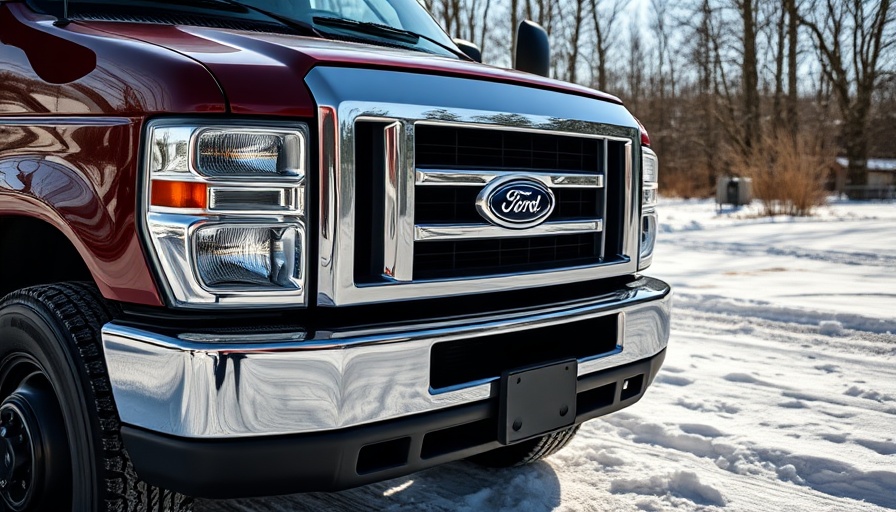
Recognizing the Challenges of the Ford E-350 Super Duty Van
When it comes to reliable vehicles, many owners appreciate the Ford E-350 Super Duty Van for its dependability, especially for those tackling demanding tasks. However, this robust vehicle is not without its share of challenges. Recently, the fourth-generation Ford E-350, produced between 1999 and 2025, has drawn attention due to several common issues that can impede performance. Understanding these problems is crucial for owners, as it can help them make informed decisions about maintenance and repairs.
In 'Top 5 Problems Ford E-350 Super Duty Van 1999-2025 4th Generation,' we explore significant issues that owners face, prompting a deeper analysis to inform van owners on essential maintenance.
Understanding Engine Misfire Codes in the E-350
The number one issue many E-350 owners face is engine misfire, indicated by codes PO300 to PO308. This issue is notable as it can lead to decreased performance and could indicate more severe problems if neglected. A common first step in diagnosis is checking the spark plugs. Alongside, inspecting the coil boots is essential, as a failure to do so may necessitate repeating the job sooner than expected. Drivers should make sure to clear any error codes after repairs and take their vehicle for a test run to ensure everything is functioning properly.
What to Do About Rattling Noises
Another common complaint with this generation of E-350s is a rattling noise, especially noticeable while driving. This sound usually signals issues with the ball joints or control arm bushings. The noise typically stems from wear and tear, particularly in regions experiencing harsh weather. Owners should consider a visual inspection to assess the condition of these components to determine if replacement is necessary, thus avoiding further complications down the road.
Dealing with Heavily Leaking Heater Cores
The E-350 is designed with two heater cores, which can lead to significant problems as they age. Notably, these heater cores, along with their aluminum lines, often develop leaks over time. Drivers should regularly check for electrolysis—an electrical voltage in the coolant that indicates deeper issues. Testing and flushing the cooling system, alongside installing extra ground straps to mitigate electrical difficulties, can be incredibly beneficial.
Fixing Issues with O2 Sensor Codes
Another concern arises when the engine light indicates a code PO130, typically associated with O2 sensor circuits. Owners should first investigate the wiring harness for damage before replacing the O2 sensors. It’s important to rule out other problems such as exhaust and oil leaks. Fixing leaks is crucial, as neglect may lead to further damage and additional costs.
Resolving Mysterious Coolant Loss
Finally, the elusive problem of coolant loss without any visible leaks is also common among E-350s, leaving many owners puzzled. This can often be traced back to a coolant tube leakage located under the intake manifold, causing coolant to drip slowly into the engine valley. Not visible from below, it can evaporate without leaving a trace, making this issue particularly frustrating. Regular checks and maintenance can help catch this problem early on, saving owners considerable hassle and money.
In conclusion, while the Ford E-350 Super Duty Van is celebrated for its durability, it is essential for owners to stay informed about common issues such as misfire codes, rattling sounds, heater core leaks, O2 sensor problems, and coolant loss. Addressing these concerns promptly will lead to better performance and longevity for your van.
For anyone facing these types of challenges, it may be beneficial to reference informative videos and articles that guide on repair processes and preventative measures.
 Add Row
Add Row  Add
Add 




 Add Row
Add Row  Add
Add 

Write A Comment